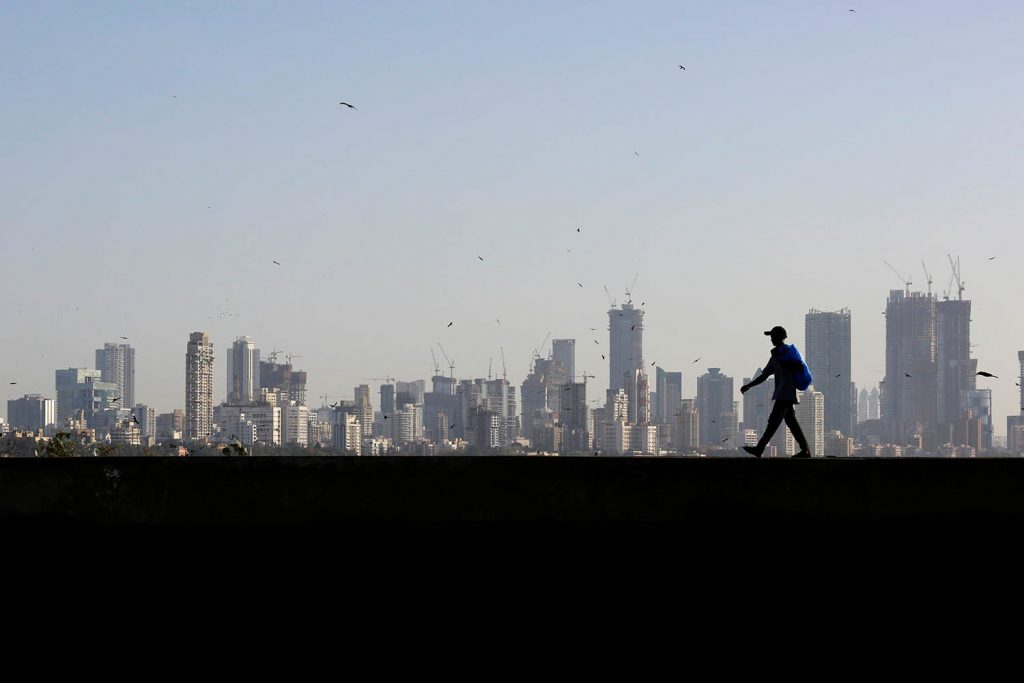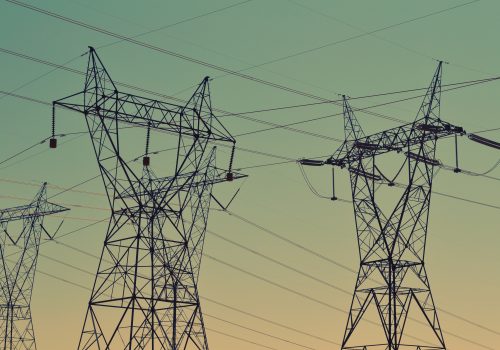“Europe has to grow out of the mindset that Europe’s problems are the world’s problems, but the world’s problems are not Europe’s problems.”
Indian Minister of External Affairs Subrahmanyam Jaishankar made this bold statement at GLOBSEC Bratislava Forum 2022, later quoted by German Chancellor Olaf Scholz at the 2023 Munich Security Conference. Importantly, the latter re-quote came just before the one-year mark of the Russia-Ukraine conflict, and that too from a key representative of the West—Germany. From its G20 presidency to the United States bringing Delhi into its Indo-Pacific defense vision, India is on a geopolitical center stage. Its strategic value for the West is increasing. Regional perceptions are also shifting in its favor: key blocs such as the Association of Southeast Asian Nations (ASEAN) are expanding their partnerships with India and progressively seeking Delhi’s cooperation.
In isolation, these developments may appear of little consequence. However, India’s growing geopolitical importance has come at the expense of other key players in the region such as China and Pakistan. Unfortunately, these consequences are not being adequately considered by global policymakers. To protect their interests and their relevance in the West and the region, China and Pakistan will respond by adjusting their strategic calculi, and these developments need to be better understood so the international community can make informed decisions when engaging with India and Asia.
While not zero-sum, India’s gain in geopolitical leverage—if blindly embraced by the international community—could escalate tensions in the region as opposed to promoting stability. Western goals for a “free and open Indo-Pacific,” as envisioned by those increasingly seeking India’s support, are thus at risk of serious backfire.
Putting India’s rise in context
India’s rise is visible in its increased geopolitical relevance both regionally and in the West. For instance, US-India ties are stronger today than ever. The pair have increasingly regarded themselves as “two pillars of a free and open Indo-Pacific.” A rise in strategic importance is evident in various new partnerships in crucial defense areas, many of which have been initiated by the United States. US Secretary of Defense Lloyd J. Austin III’s characterization of these joint initiatives with India as “operat[ing] and coordinat[ing] more closely together than ever” re-affirms this growing significance.
Regionally, India’s mounting influence follows a similar trend. While Indo-Japanese relations have been traditionally strong, new strides in their partnership have been made since last year. India and Japan met last September to increase joint military drills, with the Japanese foreign minister regarding security collaboration with India as “expanding drastically.” Increased defense cooperation initiatives were under discussion last month with Thailand as well. India’s rise in the region’s geopolitical architecture has been marked by invitations to key security discussions too, such as the Pacific leaders’ meet-up, originally scheduled for May 21-22, where India and the United States were the only two external parties asked to join. When announcing the meeting, regional organizers such as Prime Minister James Marape of Papua New Guinea called it a “futuristic meeting of global superpowers,” adding up to the growing recognition around India’s increasing influence.
These developments should concern regional onlookers for two reasons. The first is their timing in the current state of the world, and the second their nature of expansion. India’s rising significance has materialized primarily through defense partnerships. While there have been other areas of cooperation such as on the economic front, the focus for those who see India’s strategic value as rising has been on building a strengthened and more diversified defense architecture with Delhi.
The need for caution over increased defense cooperation becomes clear when coupled with its timing. For China, this comes at a time of the West’s increased concerns over Taiwan. For Pakistan, they come at a time of diminishing significance after the United States’ exit from Afghanistan and Pakistan’s looming political and economic crises. India’s rising importance, for both the West and regional partners, then raises the stakes for China and Pakistan. As Beijing seeks to maintain its stronghold over Taiwan and Pakistan does the same in Kashmir, India’s rising influence could put those interests and their strategic leverage in territorial disputes at risk.
In a region already suffering from what the United States Institute of Peace terms a “cascading security dilemma” between three nuclear armed powers (China, India, and Pakistan), the international community risks wading into complex geopolitical waters without considering the broader consequences of its actions.
The consequences to consider
Raised stakes in Kashmir
Increased global cooperation with India, and thus its rise in geopolitical value, comes at potential costs for its neighbor Pakistan. The most immediate threat is leverage in the Kashmir dispute. Washington’s pivot away from Pakistan and towards India is visible in its different levels of engagement with the two South Asian nations. For instance, last year’s Independence Day wishes for both countries came from different departments in the US government. For India, the message came directly from US President Joseph R. Biden, reiterating their joint visions in promoting global peace and security. However, for Pakistan, the communication came from US Secretary of State Antony J. Blinken and only emphasized generic, non-defense areas of collaboration such as student exchanges.
Some may argue that India’s rising value vis-à-vis Pakistan is not zero-sum, given that the United States recently defended its military maintenance package to Islamabad. However, this material expression of support appears to be the exception instead of the rule. Messages such as those from former Presidents Barack H. Obama, Donald J. Trump, and today Joe Biden have historically been subtle indicators of Washington’s aspirations in the region. For instance, Obama called his 2010 Independence Day communications with Pakistan “the expressions of true friendship that come in a time of need.” Given the visible contrast today from previous years, Washington is sending strong signals of India’s greater role in the region over Pakistan’s.
Diminishing support in Washington in light of India’s rising status means that Pakistani leverage in the Kashmir border dispute is at risk now more than ever. Despite recognizing both sides in the Kashmir conflict, the United States has increasingly shown unbalanced support to India. For instance, the US strategy post-2018 border incidents in Kashmir involved hardening its stance on Pakistan’s failure to curb terrorism, such as pushing to place the country on a global terrorism financing watch list and suspending military aid. Indeed, the concerns that prompted these actions are well founded.
However, reports of India’s human rights violations in Kashmir from the same time prompted no substantive response from Washington. A year later, when Delhi revoked autonomy for its portion of the disputed Kashmir territory, initiated internet blackouts, put senior political figures on house arrest, and deepened its historic repression of civil society and free expression there, not only did the United States sidestep the issue but it also welcomed Indian Prime Minister Narendra Modi for a community summit in Houston a month later. Washington’s favoritism at the time was evident when Modi was regarded at the summit as “doing a truly exceptional job for India and all of the Indian people” by then-President Trump. Moving to the current day, India’s hosting of the G20 in its portion of Kashmir have gone uncriticized by the United States despite Delhi’s continued human rights abuses there. Biden even announced plans to host Modi for a state visit in June, in blatant ignorance of reports by the State Department noting increased acts of state repression in India.
Passivity on India’s human rights abuses and destabilizing actions due to its strategic value is hypocritical with regards to the United States’ purported foreign policy values. It could elicit responses from Islamabad and non-state entities in the region that do not promote stability in South Asia nor are conducive to US interests there. This not only raises the stakes in the Kashmir conflict but also adds a new layer to the region’s already tense security architecture.
Increased risk of Chinese retaliation
India’s geopolitical rise has also increased the chance of an escalation with China by directly putting its interests at risk. For instance, Japan’s expanded partnership and alignment with India has focused on building resilience against Chinese presence in the East and South China Sea. This was evident in Tokyo’s new Indo-Pacific plan in late March where Delhi was encouraged to contribute infrastructure in “maritime warning and surveillance capabilities.” India’s deepening relationship with regional allies such as Australia has also been maneuvered towards maritime security initiatives with an increased focus on countering militarization in the disputed zones and protecting resource exploitation in the Pacific. Given Beijing’s heavy involvement in these disputed territories, such attempts seem to be singling out China’s interests, and are bound to push Beijing to retaliate.
In response to some of these developments, Chinese leadership has already warned of “conflict and confrontation.” The launch of these ventures, which Beijing regards as anti-China, have positioned India as an even stronger adversary with significant potential repercussions.
India’s increased influence is also repositioning its leverage on border disputes with China. For instance, recent independent investigations revealed that the United States shared crucial satellite imagery of Chinese military positions during a December 2022 border clash, helping to give India an edge. Such intelligence sharing was a direct result of US-India joint initiatives that were reaffirmed earlier in the year. A month before these events, joint US-India drills were also carried out in historic proximity to Chinese military bases in the disputed territory. However, as regional experts warn, “US support for India, while welcomed, must tread carefully so as to not conflate the recently intensified US-China rivalry with the long-standing India-China border dispute.”
With Washington projected to continue providing such strategic support, helping India with its security issues will likely raise tensions with Beijing, as Washington’s entry comes at a time when both countries are already struggling to find agreement on the issue of the border dispute. This consequence must be incorporated into US and Western policymakers’ calculi.
How is the region responding?
In light of these developments, China and Pakistan will adjust their strategic calculi accordingly, bringing along risks of heightened tensions and escalation. China’s assertiveness on Taiwan is an expected consequence. While traditionally this has come as a reaction to the United States, recent Indian strategic gains bring an added element of risk for Beijing. Whether rightly perceived or not, these heightened fears in China will impact its assertiveness in what it regards as its territories, and the region and West will have to contend with those developments.
Beijing’s current aggressiveness in the region in response is an active sign of these adjustments. From exhibiting “ready to fight” exercises around Taiwan to launching counter-militias against the first-ever ASEAN-India joint exercises in the South China Sea, China is asserting its strength in the region. It has also directly responded to the border dispute risks, given India-US collaboration, by seeking support elsewhere. In renewed talks with Bhutan earlier this year, Beijing pushed an exclusive border deal that could build leverage against India if it loses strategic ground in the disputed Doklam plateau. Beijing’s attempted renaming of several areas which India disputes have also accompanied a similar policy of counter response. As such, increasing pressure on China by the West via India has pushed China in unexpected ways, leading to strong responses from Beijing that Washington may not be expecting.
Likewise, Pakistan is expected to reassert itself in Kashmir in fear of its diminishing international value. Early signs are evident in its increasingly strong stance on the issue at the United Nations. The recent resurfacing of disagreements on Kashmir at the Shanghai Cooperation Organisation summit between India and Pakistan’s representatives reaffirms that the Pakistani side feels its concerns are not being adequately considered by the international community. A continued trajectory in this direction will only further destabilize relations with its neighbor India. Islamabad has already identified both issues that India receives implicit US support for—human rights violations and Kashmir’s change in status—as major roadblocks to a future resolution.
Given the nuclear capabilities of both nations, the international community should remain on high alert, especially considering Pakistan’s expanding military and economic cooperation with China. New analysis suggests that the increased partnership comes at a time when Islamabad is gripped by internal disagreements over a potential pivot to China (over the United States). If these speculations are true, Pakistan and China may “lock” both India and the United States out of counterterrorism efforts in the region, which poses not only risks to their national security but also to regional stability; terrorist attacks have brought India and Pakistan to the brink of war on numerous occasions.
The recent trilateral talks between China, Pakistan, and Afghanistan are an early sign of a potential strategic realignment in that direction. The United States and India may soon find counterterrorism and related regional issues, already resurfacing, to be harder to combat once Washington’s pivot to Delhi takes hold and drives Pakistan fully into China’s camp.
Moving forward
Overall, India’s rise cannot simply be viewed from the lens of Delhi gaining global ground. The crucial question is one of threat perceptions on the Pakistani and Chinese sides which—whether legitimate or not—risk destabilizing the region. Members of the international community who are giving increased value to India as a geopolitical anchor must stay aware of these consequences. The region’s security architecture will not simply change in India’s favor as expected by the United States and its allies. If Pakistan and China continue to deepen their ties in response, conflict dynamics and security realignments may present more avenues for escalation and conflict.
In the short term, dialogue around clarifying intentions and easing threat perceptions would help. In the long term, interaction with partners in the Middle East such as the United Arab Emirates and Saudi Arabia will be a useful watchpoint. These countries have managed to maintain deepening cooperation with Pakistan, China, and India at the same time while being mindful of regional dynamics. Though varying in magnitude, mutual trust among these parties could help resolve tensions, especially between India and Pakistan as rumored.
In the long term, the United States should continue to deepen ties with India if this aligns with its foreign policy objectives, but it must also engage meaningfully with other regional stakeholders. This balancing act will require more than just passively “monitoring” India’s human rights violations. It must call out such repressive acts, particularly against Muslim minorities, to convey its impartiality on Kashmir. Using its leverage with Delhi to address these and other issues will reduce the risk of an escalation with Pakistan, which will respond (whether productively or not) to stay relevant in the Kashmir conversation. Likewise, pressure on Beijing through India should be pursued with caution and account for China’s potential responses elsewhere, such as in Taiwan and maritime disputes where it continues to assert strength.
In the end, the region will likely maintain a high propensity for conflict. But the West can play an effective role in slowing escalation by pursuing its objectives while bearing in mind the consequences of its policies beyond immediate goals, whether that is to pressure China or to counter terrorism.
Sandeep Kumar is a candidate in Georgetown University’s Master of Arts in Conflict Resolution program, graduating in December 2023. At Georgetown, Sandeep focuses on geopolitical risk and conflict analysis, with a regional concentration in Asia.

The South Asia Center is the hub for the Atlantic Council’s analysis of the political, social, geographical, and cultural diversity of the region. At the intersection of South Asia and its geopolitics, SAC cultivates dialogue to shape policy and forge ties between the region and the global community.
Related content
Image: A man walks along a wall overlooking the central Mumbai's financial district skyline, India, March 9, 2017. REUTERS/Danish Siddiqui



